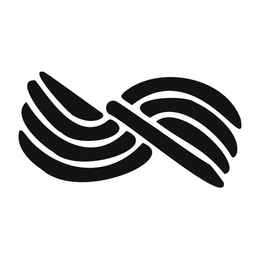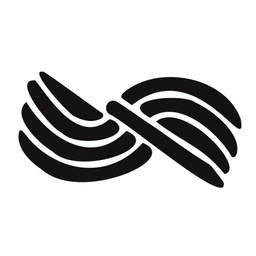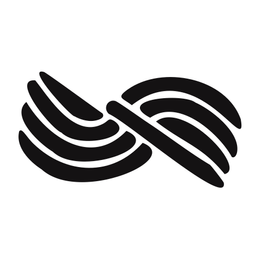Fly fishing in the Italian Alps, Part 1: Decoding access
The first in a series on fly fishing in the Italian alps, on getting licensed in Italy, and the main differences between fly fishing in Italy and the USA.

Greetings and salutations! I'm just back from a family trip to the Italian Alps. Suffice to say, it was epic. Best of all, I was able to fish nearly seven days across the time we were there.
Over the next few newsletters, I want to share some stories from the journey, and try and bring you along on the adventures across the Piemonte and Alto-Adige / Südtirol regions, and acquaint you with how the Italians do things, should you ever head over to check things out.
Read all the posts in the Italy 2025 series on fly fishing in the Italian Alps here. 🇮🇹
I was surprised at how straightforward it was to get situated by myself, once I understood a few big ideas. What follows are my impressions, which contain traces of ignorance and cliché, and are not at all to be taken as expert guidance. But, they can get you started.
In this first installment I'll talk overall access: how to get licensed and find the right places to fish. In later newsletters I'll go in depth about the rivers we fished, the tactics and flies that were successful, and the overall approach to international fly fishing travel.
n.b. If you're reading this and have expertise around fly fishing in Italy that would be helpful, or can correct any of my likely plentiful errors, please leave a comment!
Italy has accessible fly fishing, even for DIYers
Here's the main thing to remember: Italy is a great destination for fly fishing, whether you're springing for a fully-fledged, guided everyday splurge trip, or just looking to tack a few days on a family vacation, like I did.
I don't have megabucks to spend on fishing exclusive travel, so my fishing was largely DIY, smushed in with family hikes and trips to the river to swim.
I had the huge benefit of an American friend living in Milan who helped explain things, and do some interpretation when we fished together. But, I think with some study, Google Translate, and a friendly attitude, one could string together some pretty good days fly fishing in Italy without being fluent in Italian (or German, as is the case in Südtirol / Alto Adige).
(n.b. Everything up in the Südtirol neck of the woods has two names, owing to the historical Austro-Hungarian Empire-ness of the area. Folks also speak a form of German that a German-speaking travel companion referred to as "like English in Louisiana". This makes things a little more confusing, and takes some getting used to, but good nature, smiles, and gratitude helped pave the way for us.)
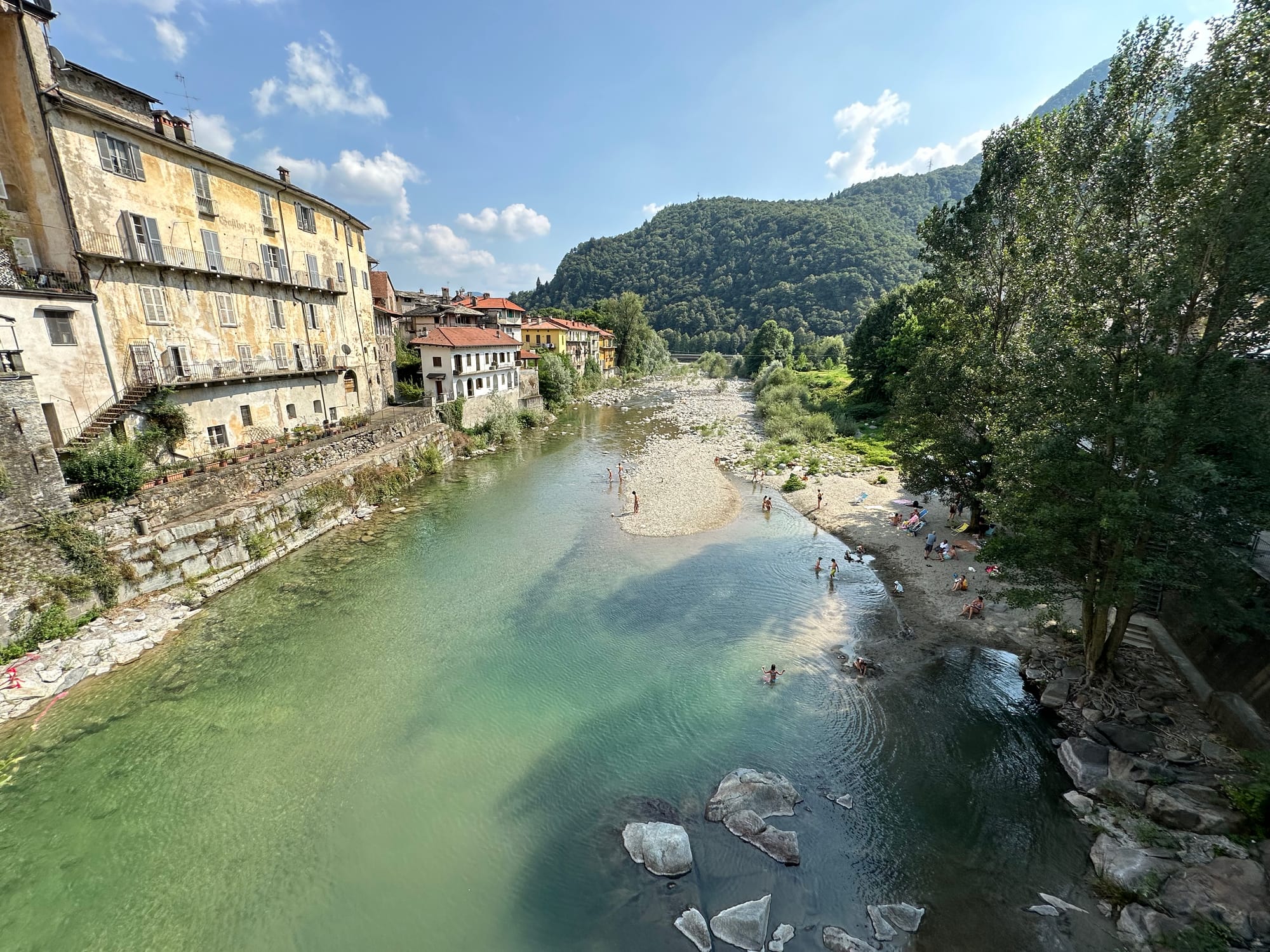
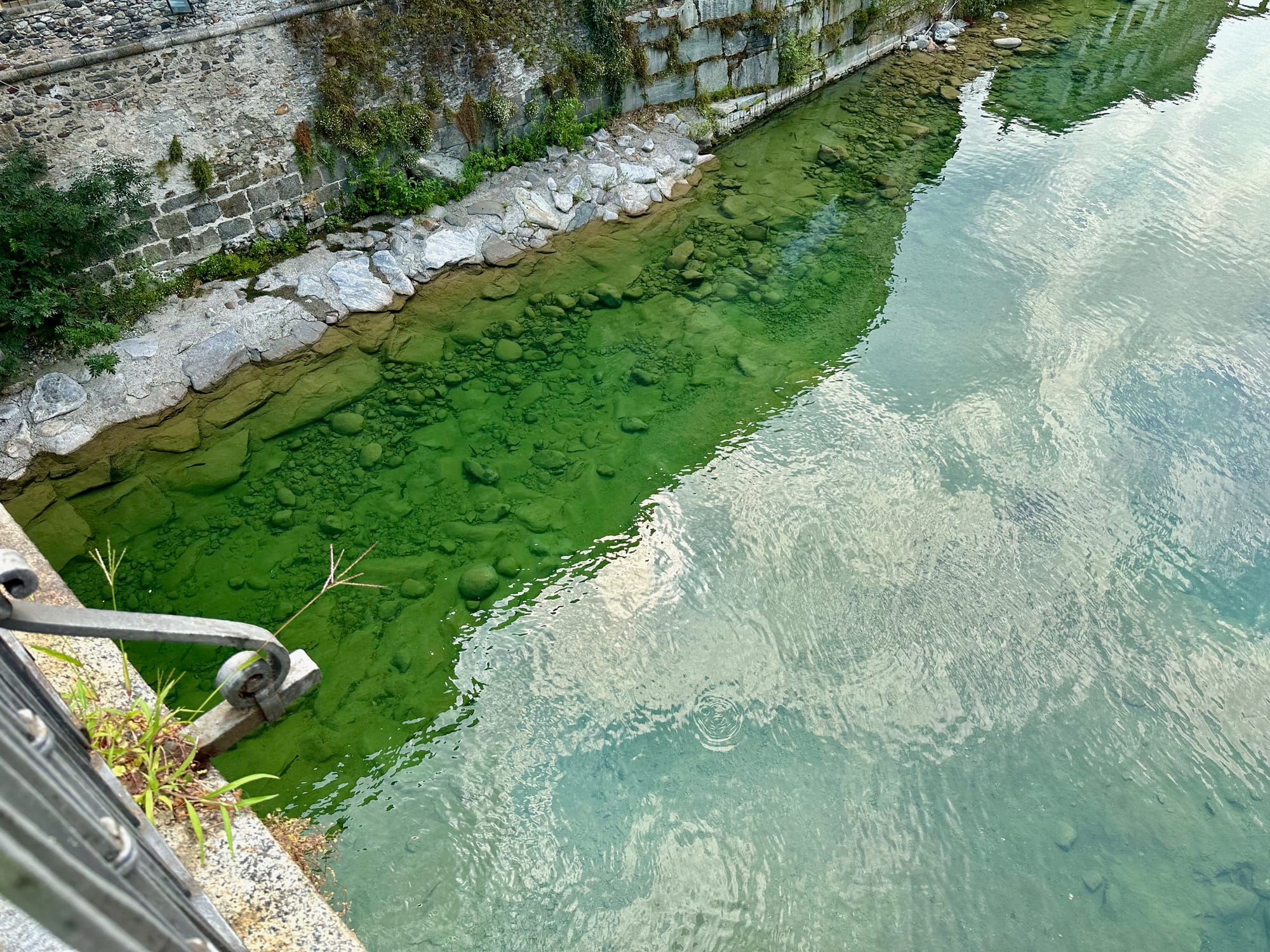
Look closely into the crystal-clear water and you'll see: fish throughout. This is the Mastallone as it flows through Varallo Sesia, meeting the Sesia a little further downstream.
Trout throughout town
It's the exception, not the rule, to have excellent fly fishing close to home. Especially for cold-water species like trout, which tend to live in more remote, higher-up places. Coldwater fly anglers travel all over the world—New Zealand, Argentina, Kamchatka—to find trout and salmonids. Locations are often really remote.
But what I found in Italy is I didn't have to look far from our home bases. Areas to fish were close by to places to stay. In many cases, fish were prolific all through the rivers, including right in the city center.
The other part that helps keep things feeling cozy is there's mobile service almost everywhere you go. So, if you're finish up the session in the evening and all of a sudden the fish start getting active, you can call and push back your dinner reservation another hour.
Simplifying complex access
The biggest shift in fishing in Italy versus the Western United States was around access, and a sense of centrality of place. Here in Oregon, we buy our Oregon license, and, except for a few special areas, are good to go across the entire state. Which, is about 80% as big as Italy, landmass-wise.
Whereas, in Italy, political and cultural administration of areas including rivers and lakes have been in flux for centuries, if not millennia. Water rights, access, and even entire lakes and rivers have changed hands many times, across many different types of circumstances.
I defaulted to the idea that water was closed unless I knew it was open, and had permission to be there.
For instance, in the town of Merano, we stayed in a wing of a castle built somewhere in the 11th or 12th Century (with something that old, what's a few hundred years?). The castle's owner was kind enough to give us a tour of the main space, where he and his family lived. He is an avid hunter, and showed us his trophy room. I mentioned I had fished the Passer river just outside town the day before, and he mentioned in passing that his friend had the fishing rights to XYZ river, and enjoys fishing there. In this part of the country, I'd imagine this is pretty common, and means most areas are closed to non-affiliated anglers.
Rather than try and understand everything, I defaulted to the idea that water was closed unless I knew it was open, and had permission to be there. There were still more than enough places to fish, and more than enough fish to find.
Regional and provincial licensing
Licensing in Italy starts at the regional level. There are 20 regions and autonomous regions in Italy. They're best thought of as you would American states. In most places, the first thing you need is a regional license to fish. You get this in whatever administrative hub town is closest to a capital of that region.
So, in the autonomous region of Trentino / Alto-Adige (Südtirol), where I fished in the province of Bolzano, I needed to get a regional license first.
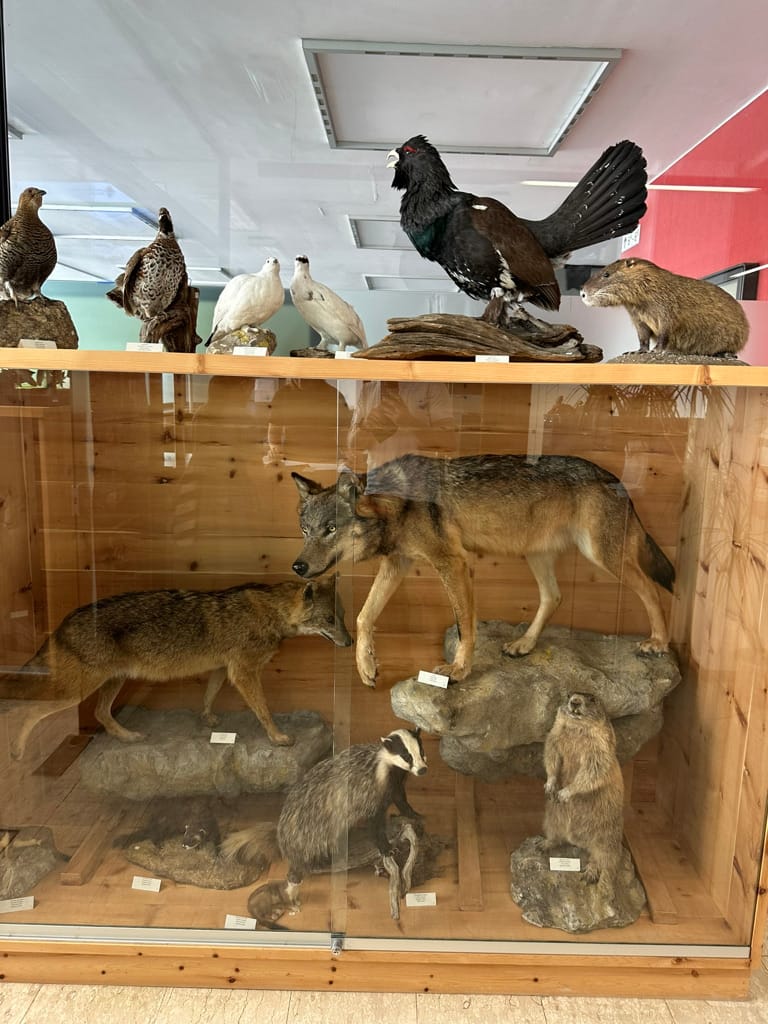
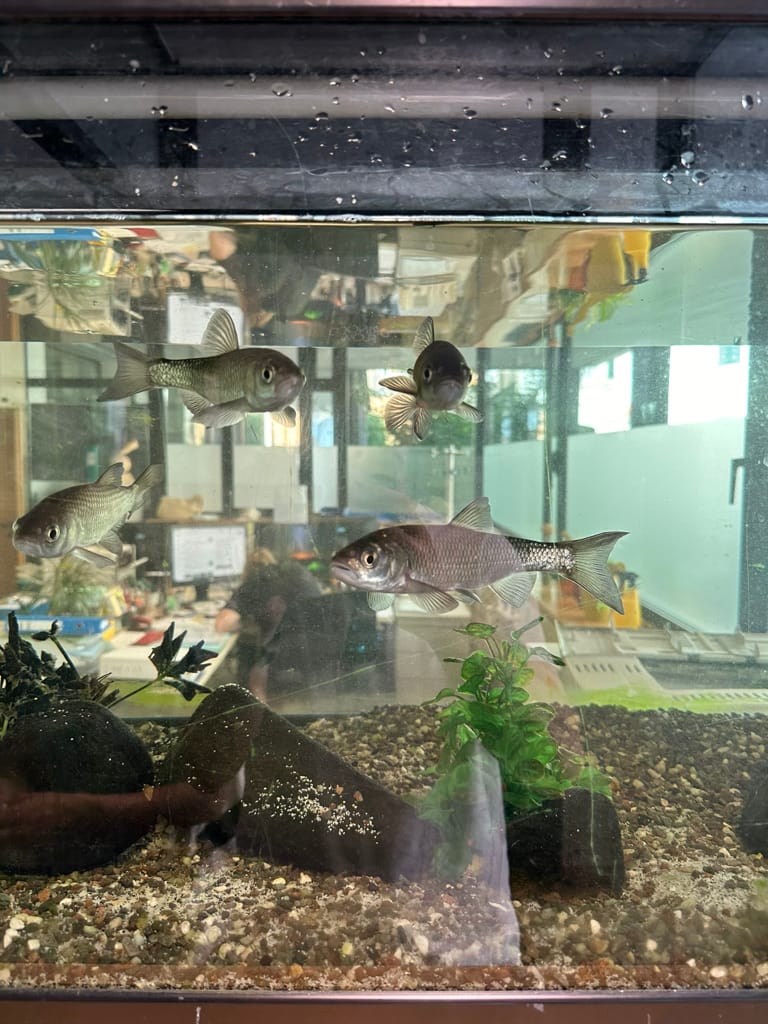
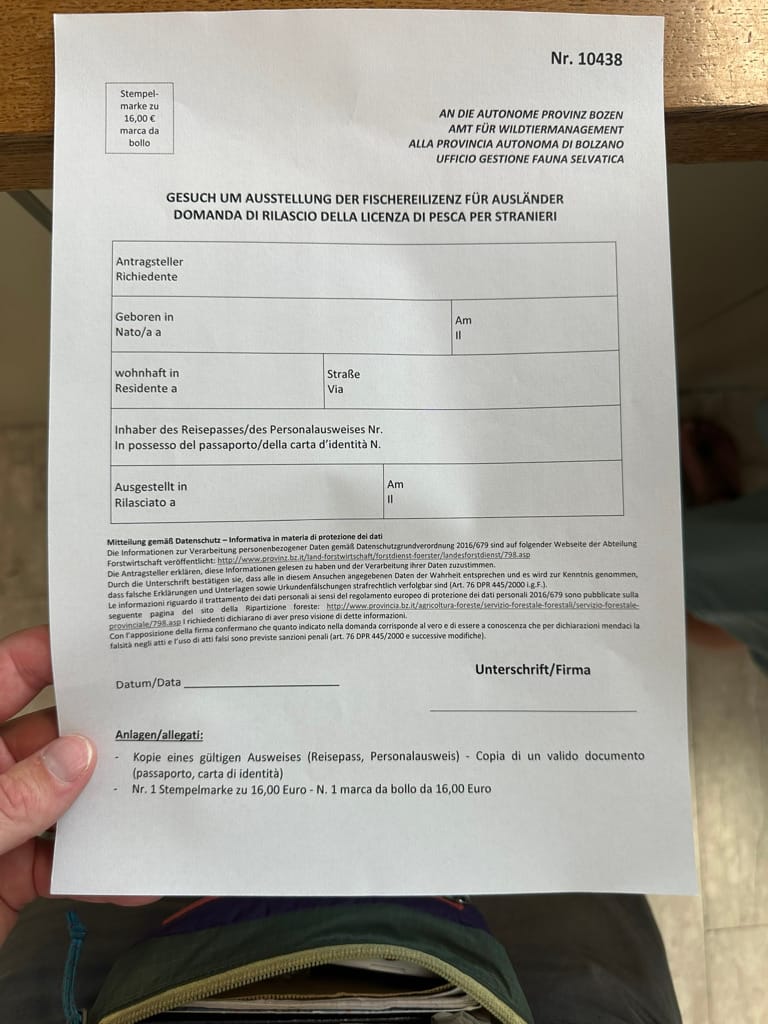
Some of what you might find once you're licensed in the province, as displayed in the regional administration office in Bolzano. I have no idea what those fish are: chub perhaps?
It was a fairly straightforward process. I showed up with two €16 tax stamps and a photocopy of my passport, all acquired at the newsstand / tabac down the street, and the helpful clerk assisted me in filling out my forms. The office had all sorts of information about local wildlife, and mounts and trophies, as well as an aquarium. In about ten minutes, I had my document, a fishing license for foreigners valid for the next decade.
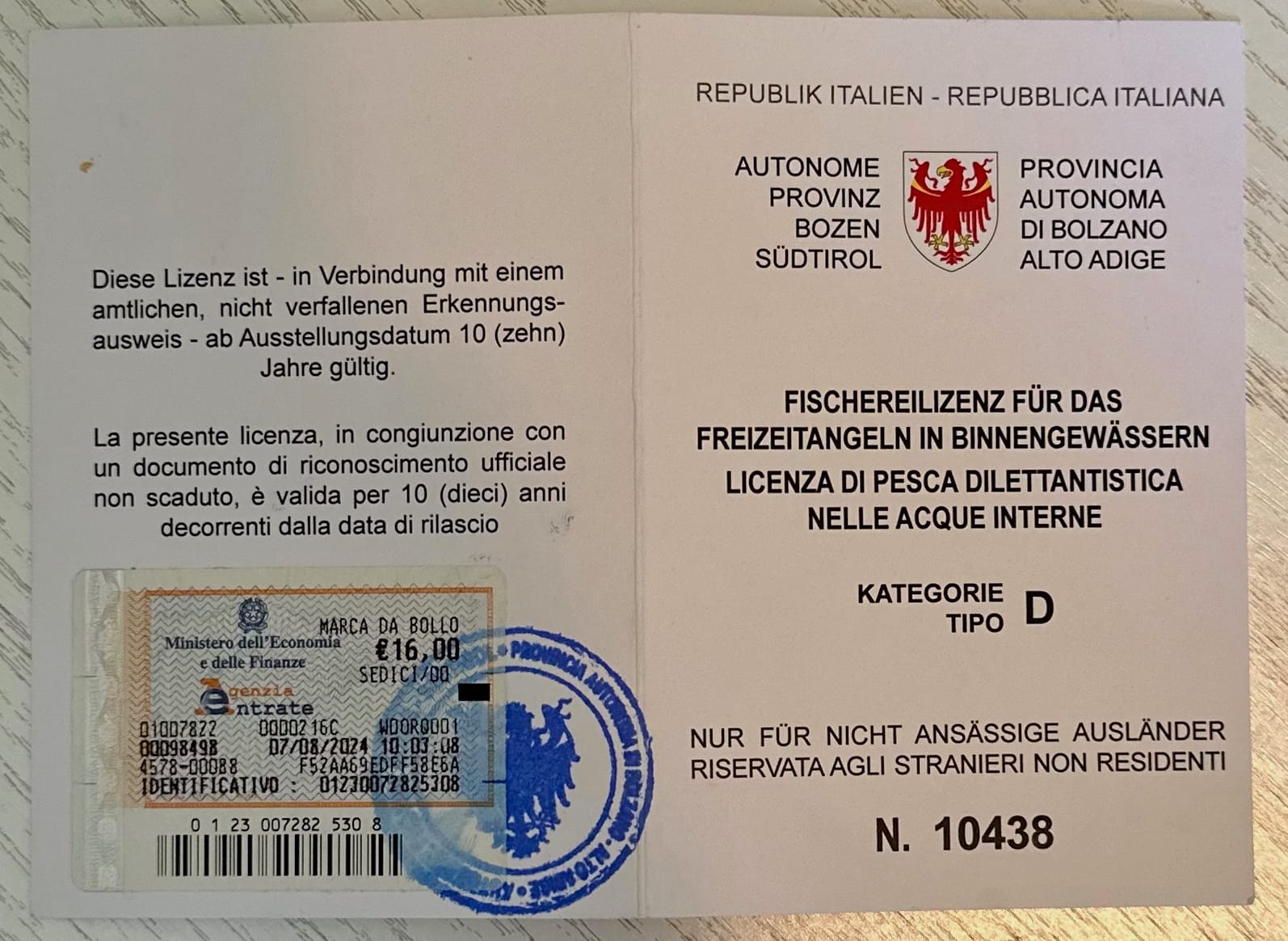
If I were more skilled in either German or Italian (this is the region where they speak both, but prefer German) I probably could have made some small talk, and asked, "So, where should I fish now?" And the answer would have been something like "Go talk with a fishing association, or inquire at the places you buy your local permissions (permesso), they'll tell you what's open."
Here's something that makes this process simpler: In lots of regions, there's reciprocity with other regions. For instance, we fished in Piedmont. There's reciprocity with Trentino / Alto-Adige, so licenses from that region count there as well.
It's not clear whether the process by which I got my foreigner's license in Bolzano is at all standardized. I did a little bit of research around Trento, the neighboring province to Bolzano, and the guidelines were a bit murkier, and seemed to include a training course, with this most thorough study guide (PDF). Which, I love in theory (more on this later) but the dates for passing the online or IRL trainings didn't line up with our visit.
I'm sure, like with most things Italian, having someone explain it in person is a lot easier than trying to figure it out through a bureaucratic website and Google Translate.
Finding local beats
Regional license in hand, we set out to find places to fish. In keeping with the earlier principle of focusing our fishing on places where we knew it was OK, we went entirely through clubs and associations.
At the local level, clubs and associations control stretches of water. In Südtirol we relied mostly on stretches of river through the Angling Club Meran. The site was invaluable in helping plan where we'd be fishing, and when, and how to acquire permessi.
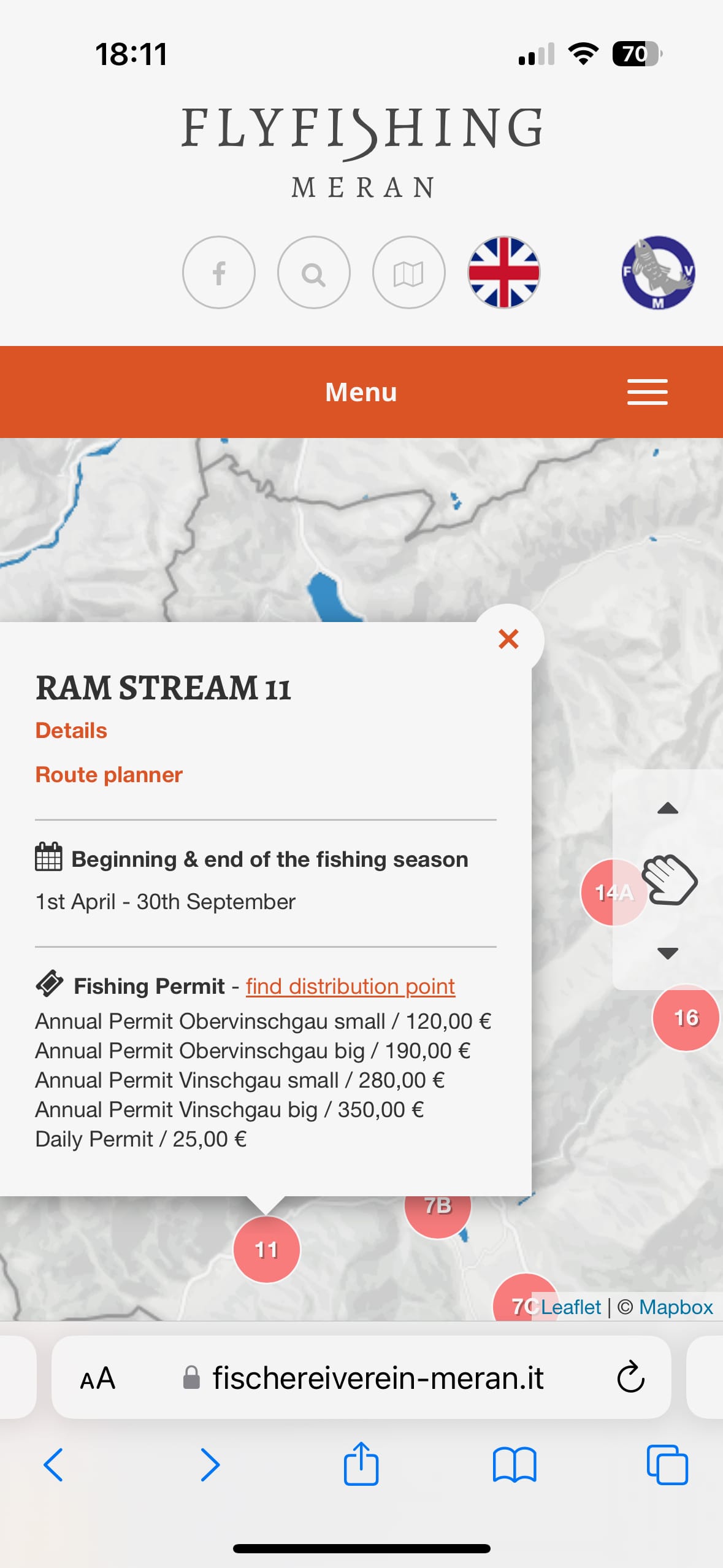
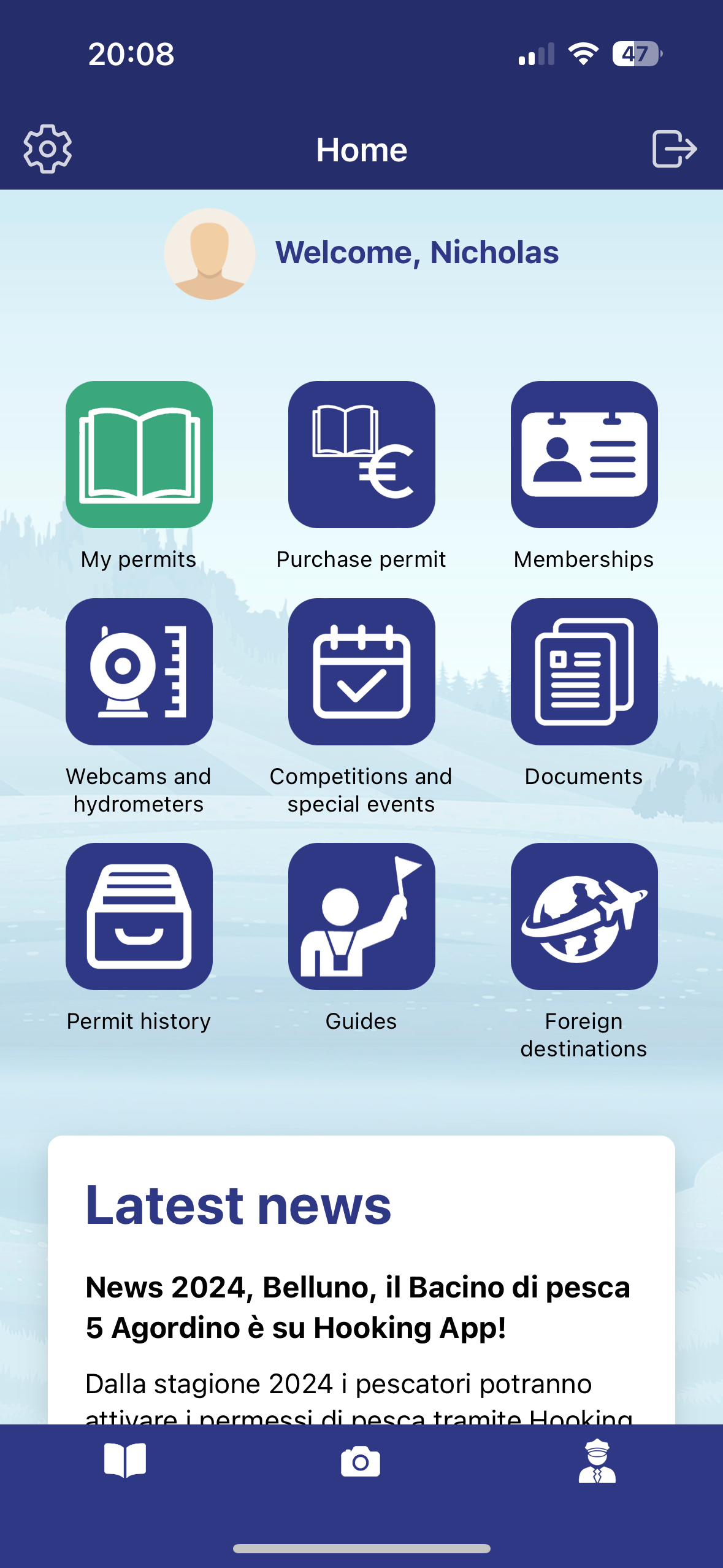
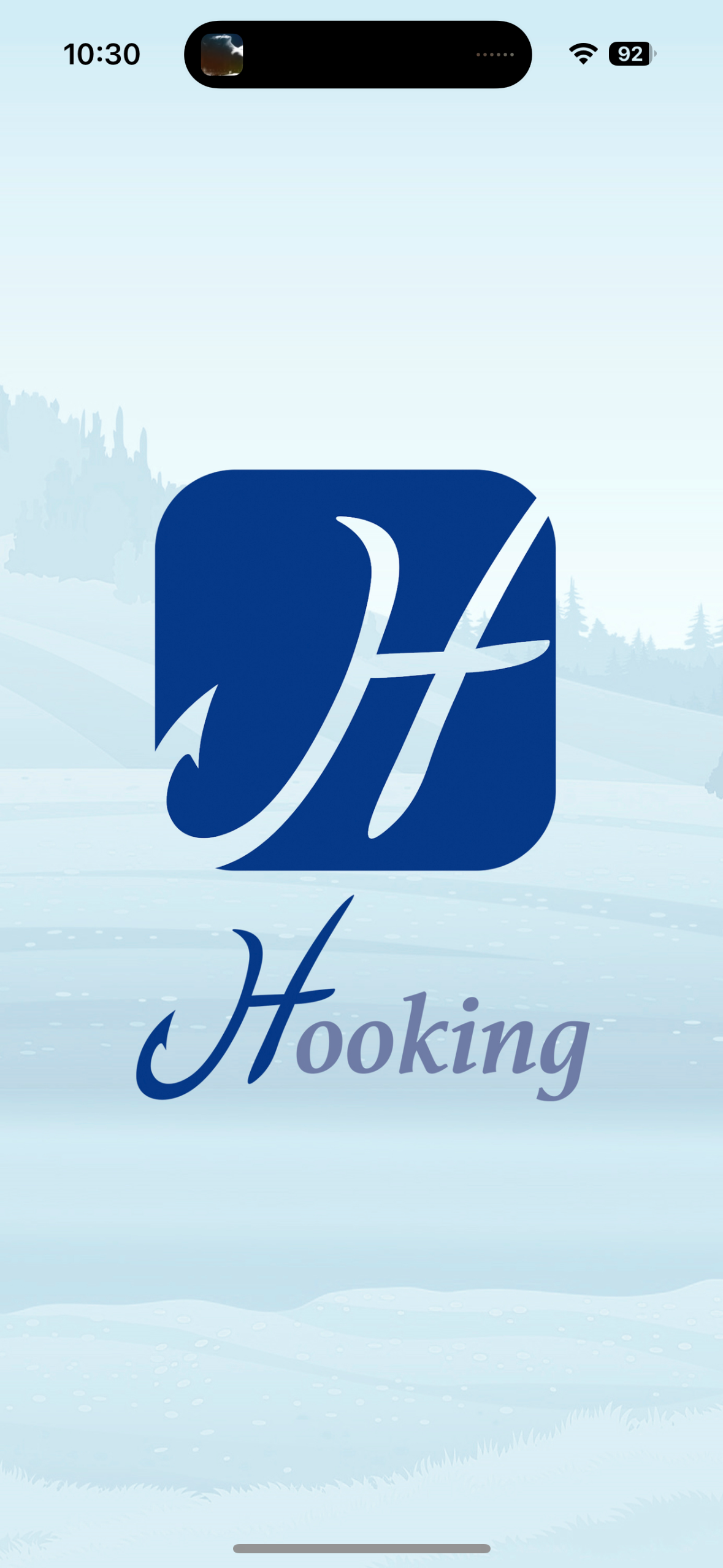
Online resources, including app-based resources like "Hooking" were helpful to try to find accessible rivers and lakes.
These different areas vary in size, but are definitely bigger than what you'd traditionally refer to as "beats" in the UK, though that's probably the easiest way to think of them. In all of the beats I fished in Italy, there was more than enough water to fill a day's fishing, even if you moved around a lot.
Here's an example of a beat I fished just outside the town of Merano, the Passer River 258. This is a lovely stretch of river that flows through apple and grape orchards, and features ultra-clear water across a series of bouldered cascades. The daily price was the most expensive of the places I'd fished, at €70, but it was right outside of town, about ten minutes from the castle we were staying in, and I got both a morning and evening session in.
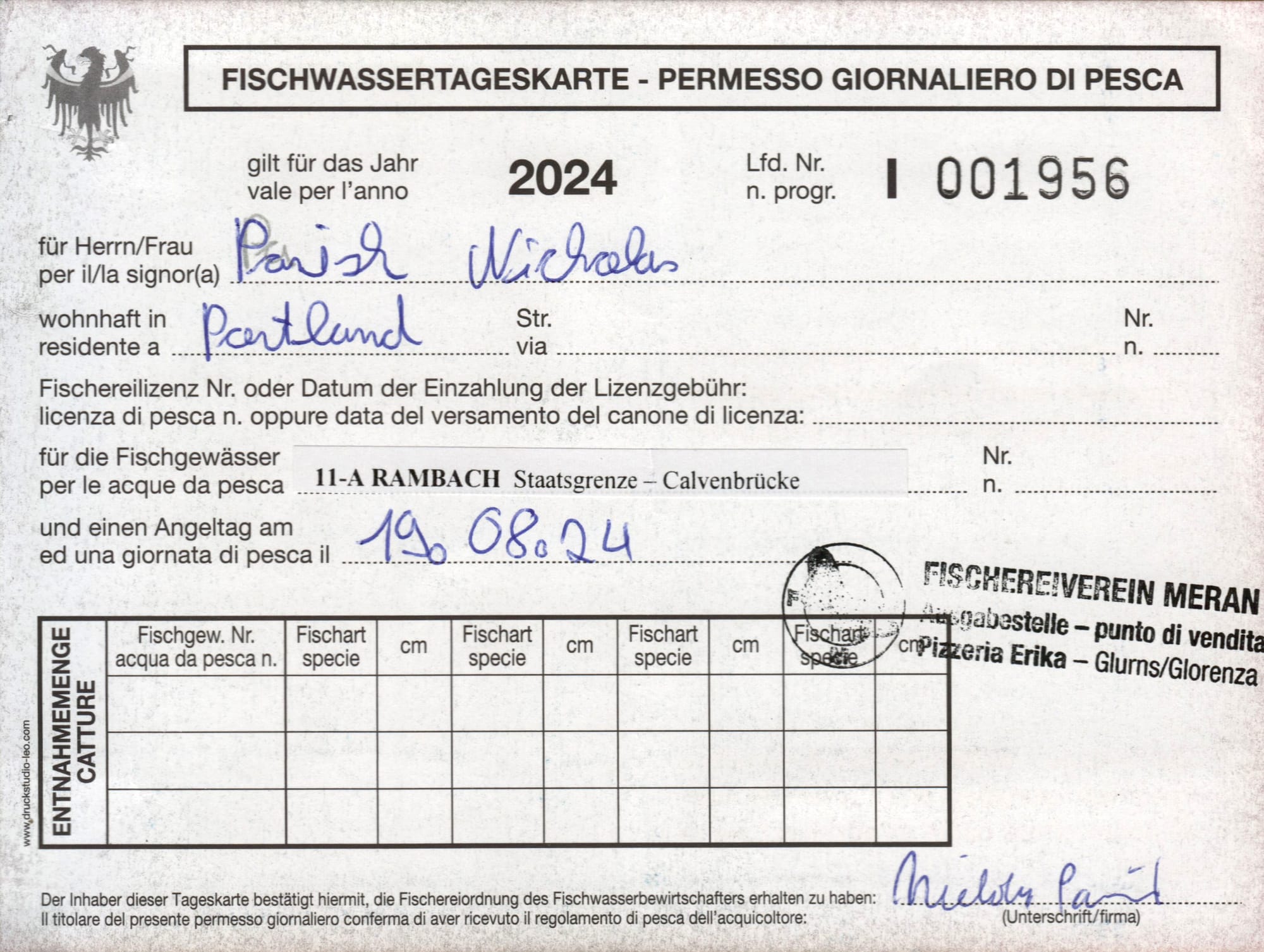
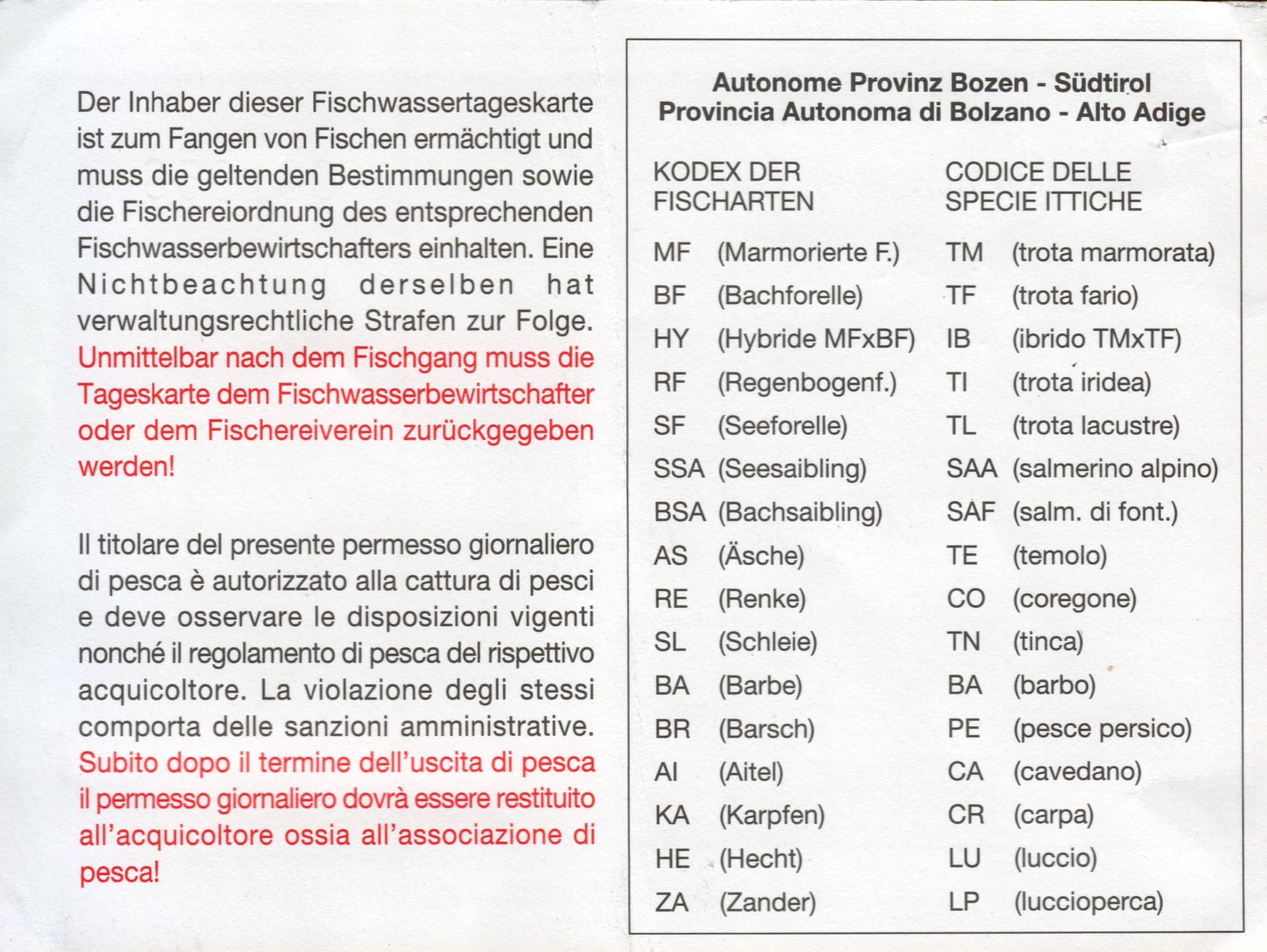
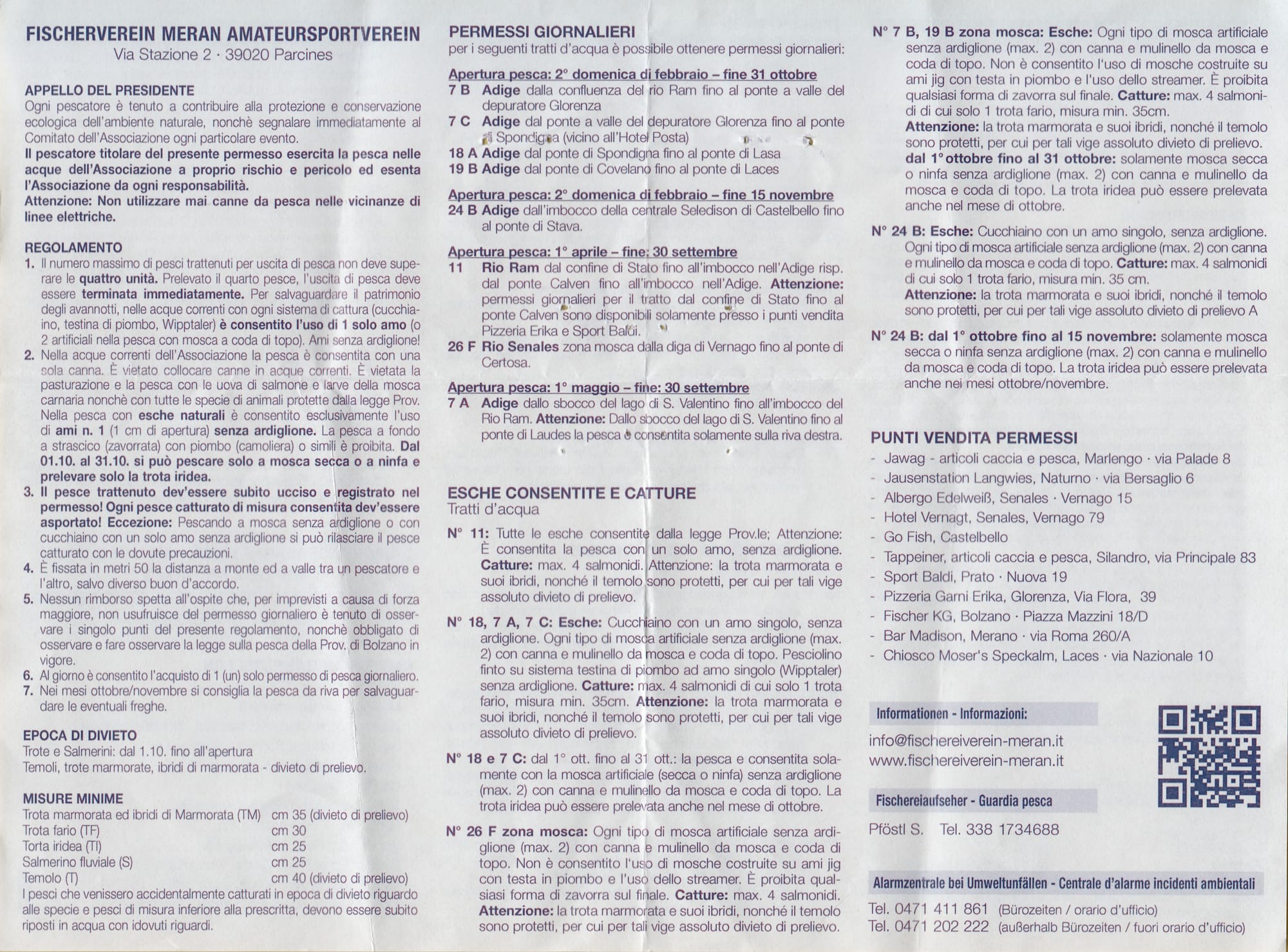
Here's an example of the daily pass in the Bolzano - Alto Adige region. You're meant to return the leftmost card (which has species designation on the reverse) to record your catch. The entire rule sheet accompanies each fischwassertageskarte and gives the general and specific lowdown.
Rules vary from stretch to stretch. Some stretches are catch-and-release only, some are kill sections, some are fly only, some you can't use streamers. Most areas required barbless hooks and the use of a net.
Across the trip, I only went for dailies. Prices vary wildly, from €10 on up. Frequent fishers can buy 10-packs of daily access, and get a slight discount. Some stretches sell annual access, for an angler and their guests. And in some areas / with some clubs, women fish free. (Seriously! Deal of the century, ladies.)
All-up, permits were the only real fishing expense (other than some flies at local shops). They amounted to around €250 total. And, I think if you go with a guide, they often include the permit price in their overall fee.
Local control and administration
Local clubs are essential to the whole deal. They stock fish when it's not a wild-only stretch, they improve habitat, they issue and check licenses, hang signage, and generally administer things and advocate for the river. Sometimes they have a clubhouse along the route. At La Gavala, a reserve in a stretch of the famous Sesia river in near Varallo Sesia in Piedmont, the fishable area goes about four kilometers, through a series of villages.
We bought our pass at a bar / tabac in town, Da Nicoletta, which doubles as the association’s clubhouse / after-hours fish tales spot. We bought our daily ticket, for €47, and wrote our names and information on both sides, then detached the tickets and put one side ("A") in a drop box at the main informational sign / map, and kept the other as proof of purchase.
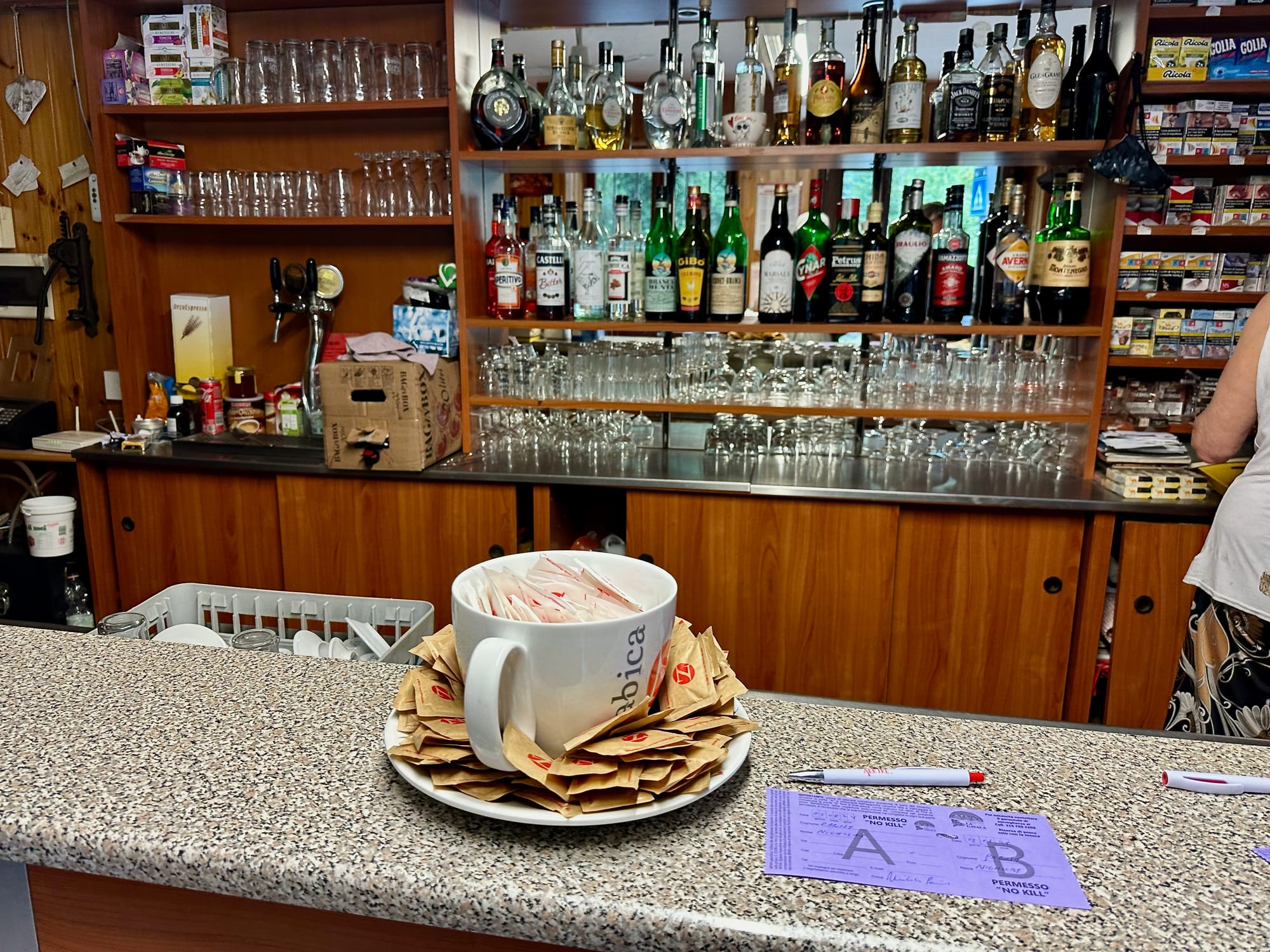
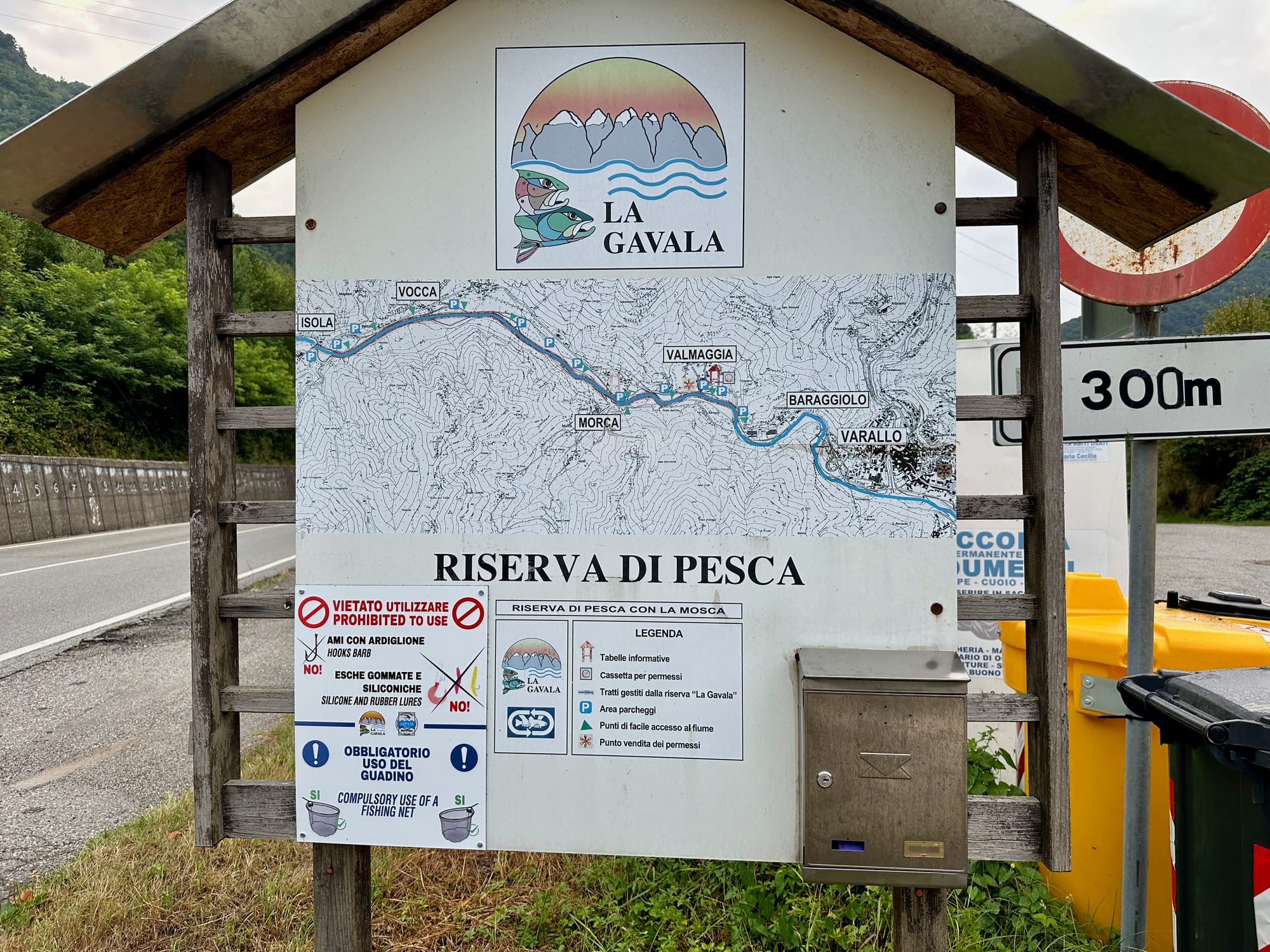
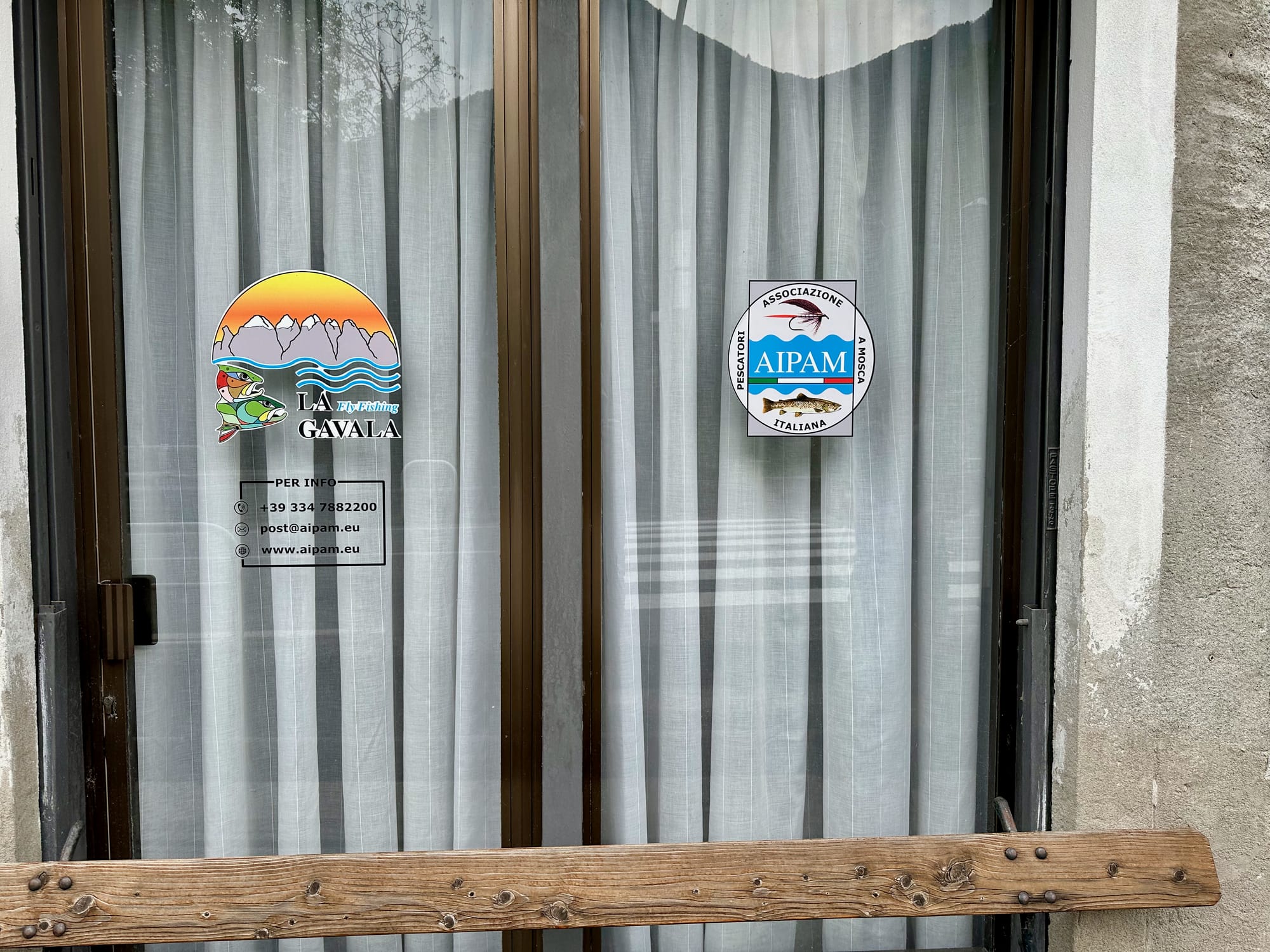
Pick up a double espresso, a pack of smokes, and a permit at daybreak. Drop your "A" half in the box at the sign, and come back to hang after the day is done. Not a bad setup.
Enzo, the administrator of the stretch, stopped by as we strung up our rods a few kilometers down the road. We had a nice chat. I have no idea how indicative his setup is of the overall experience, but here's what I understood:
Enzo started work at 14, apprenticed at, then took over his father’s faucet business, He's is now retired in his 60s after 45+ years working. He runs the La Gavala stretch as a not-for-profit.
Here's a drone video of La Gavala
He basically licenses a stretch of the river from the valley association, for an annual sum in Euros. The valley association pays part of that up to the regional government. It has to allow concessions on up to 40% of the fishable area. So, I guess, if you think a stretch is fishy and want to take care of it, you ante up and pay the annual fee and set your price, then you can stock and manage the fishery as you see fit.
All the fishermen’s fees go back into the reserve. Enzo uses the money to buy fish to stock the stretch. It’s a no-kill, fly-only section, so his investment probably goes further than it would on a put-and-take fishery. He is adamant about advocating against hydroelectric projects that would jeopardize the river's productivity.
Given the number of big burly fish we got into when we fished that stretch, there's plenty of business. But, that's a story for one of the next installments.
Italians do it better
Part of me loves the open access system we have in the states. But it sure was fun to fish beautiful rivers with few other anglers. I think we came upon a total of six other anglers fishing, the entire time. Across seven days fishing, in four different rivers, in two regions.
If I were to generalize about Italian fly fishing, barriers to entry mean the sport is taken more seriously. People invest their time and money into the sport, they're less casual about it. All the Italian fly anglers we saw were really good. Refined casting. Considered wading. Playing big fish hard, to the net, then back in the water. I saw one fellow land and release a 30" brown in under five minutes, from hookup to net to freedom. No pic, no celebration.
We had a little bit of a myopic view into only fly fishing; there are lots of other kinds of anglers. When we were waiting for our Passer licenses in Merano, and shooting the breeze about fly selection with the owner, a half-dozen folks came through to buy bait. Maybe that's more casual, and less considered. But I doubt it. Taking care of things for the next generation seems to be more
Here's the Angling Club Meran's Code of Conduct:
The modern and enlightened fisherman can be recognized immediately ... He does not wade constantly and unnecessarily through the waters and keeps enough distance to other fishermen. He is aware that his catches are not things, but living beings. Therefore he fishes without barbs, he avoids long drills caused by too thin leaders, he loosens the hook with wet hands and he releases the caught fish without pulling it ashore and without keeping it out of the water for a long time to shoot beautiful pictures. If taken, the fish is killed immediately and processed in a fair manner to be enjoyed later as a naturally grown food. As a user of it, the fisherman is also nature's protector. He leaves no trash and respects or reports observed environmental offenses. Only in this way we can justify our beloved passion in today's society.
What do you think?
- Have you fished in Italy?
- Was it always this way?
- What are the pros and cons?
- What did I get wrong?
Reply, or let us know in the comments.
In the next few installments I'll be getting specific on places I went and rivers I fished in Sudtirol / Trentino Alto-Adige and Piemonte, so tune in!
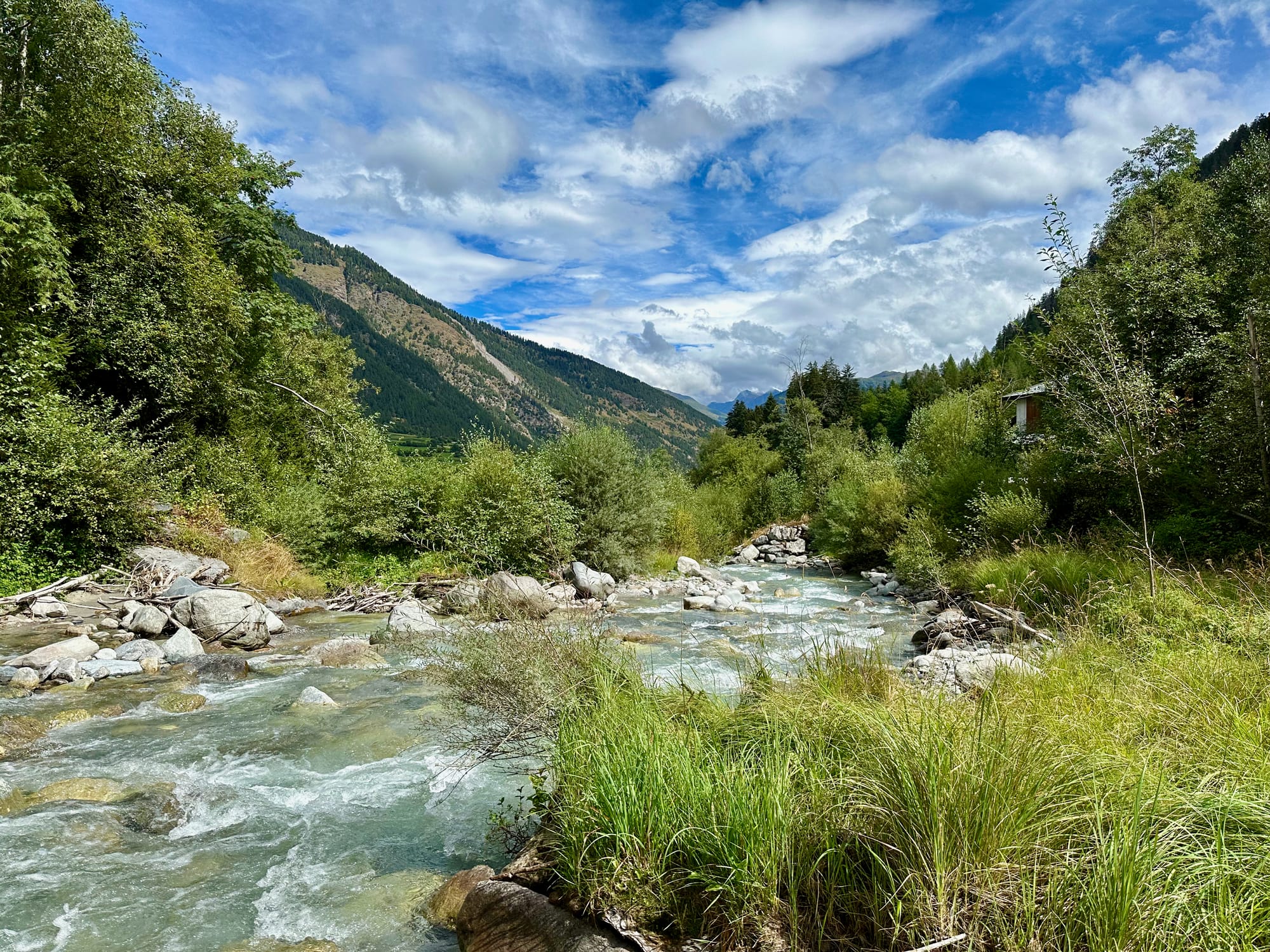
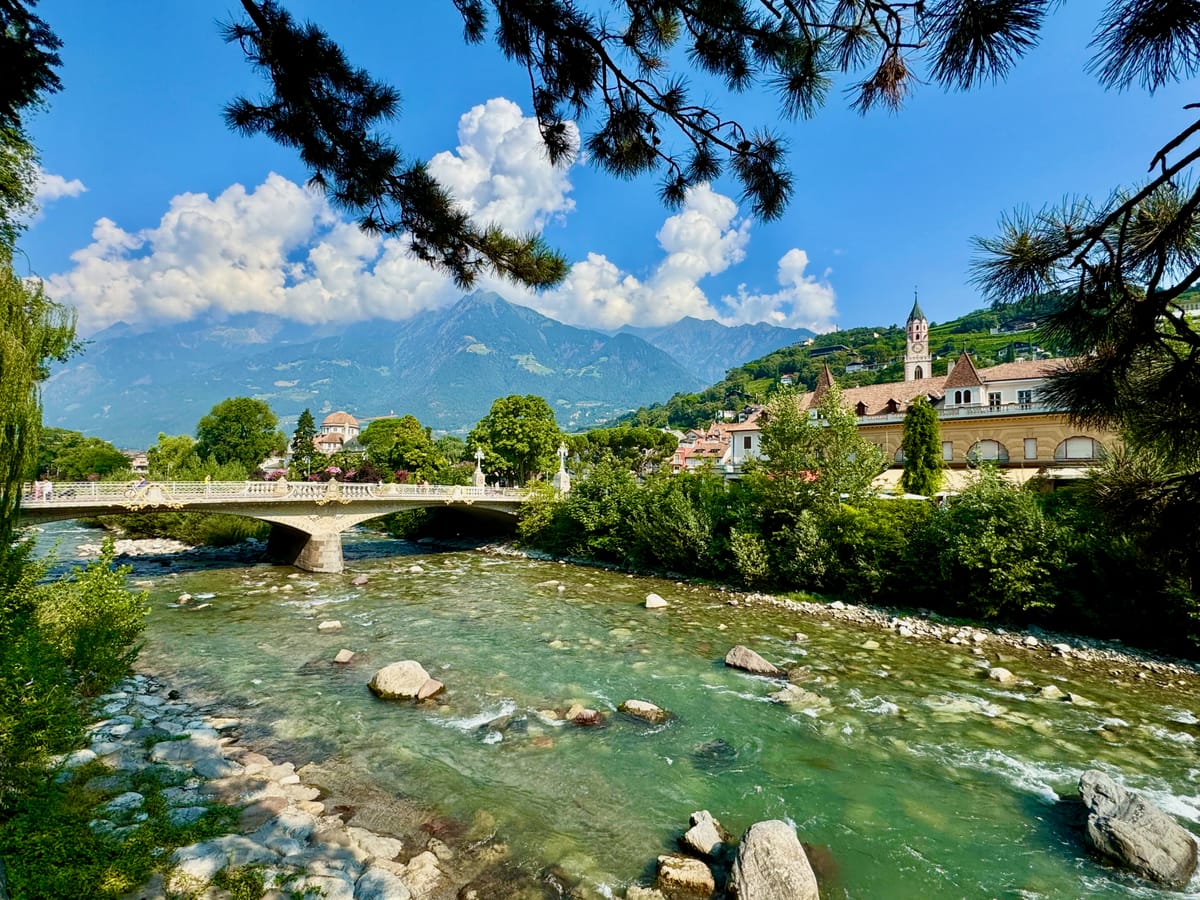
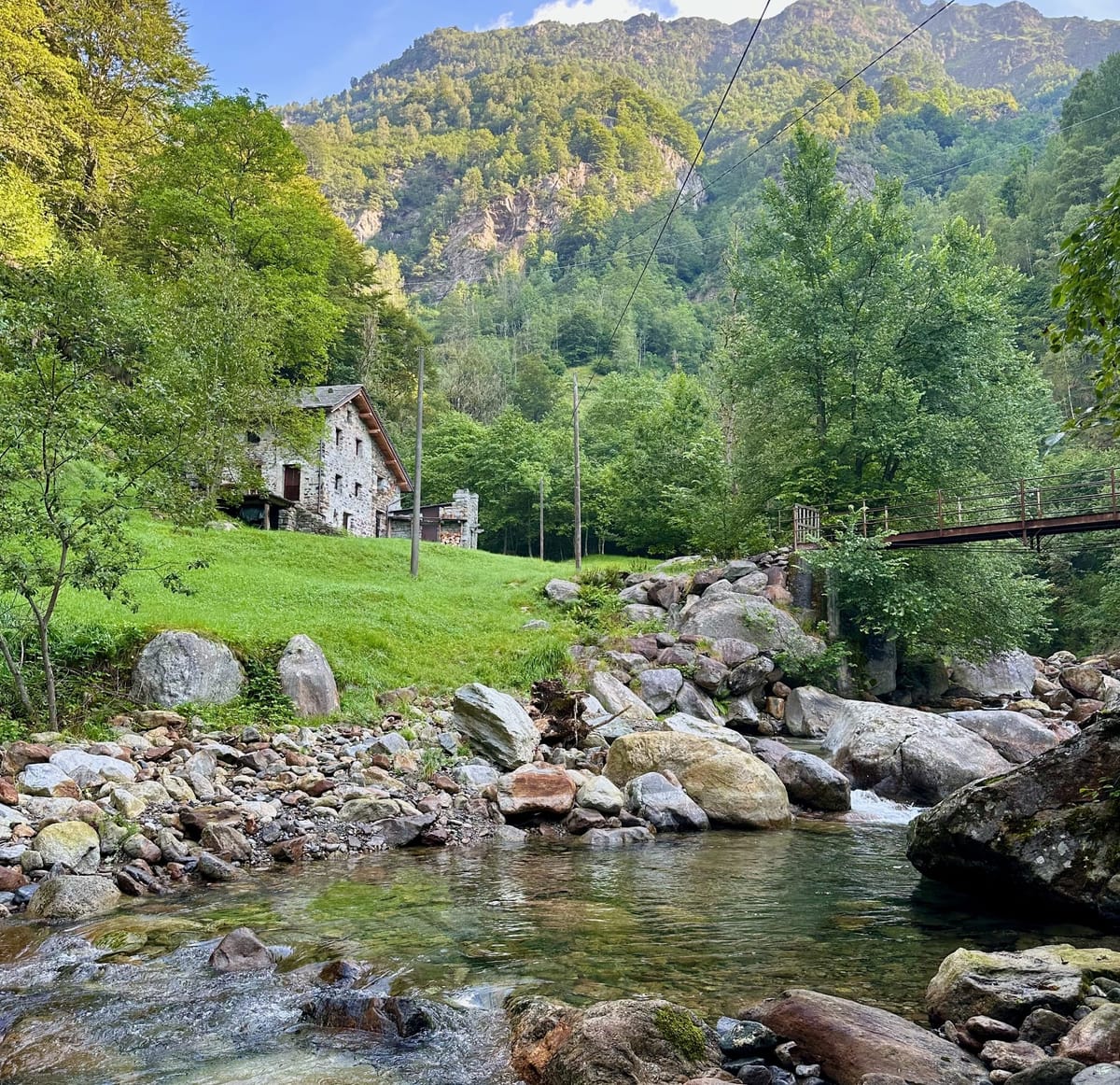
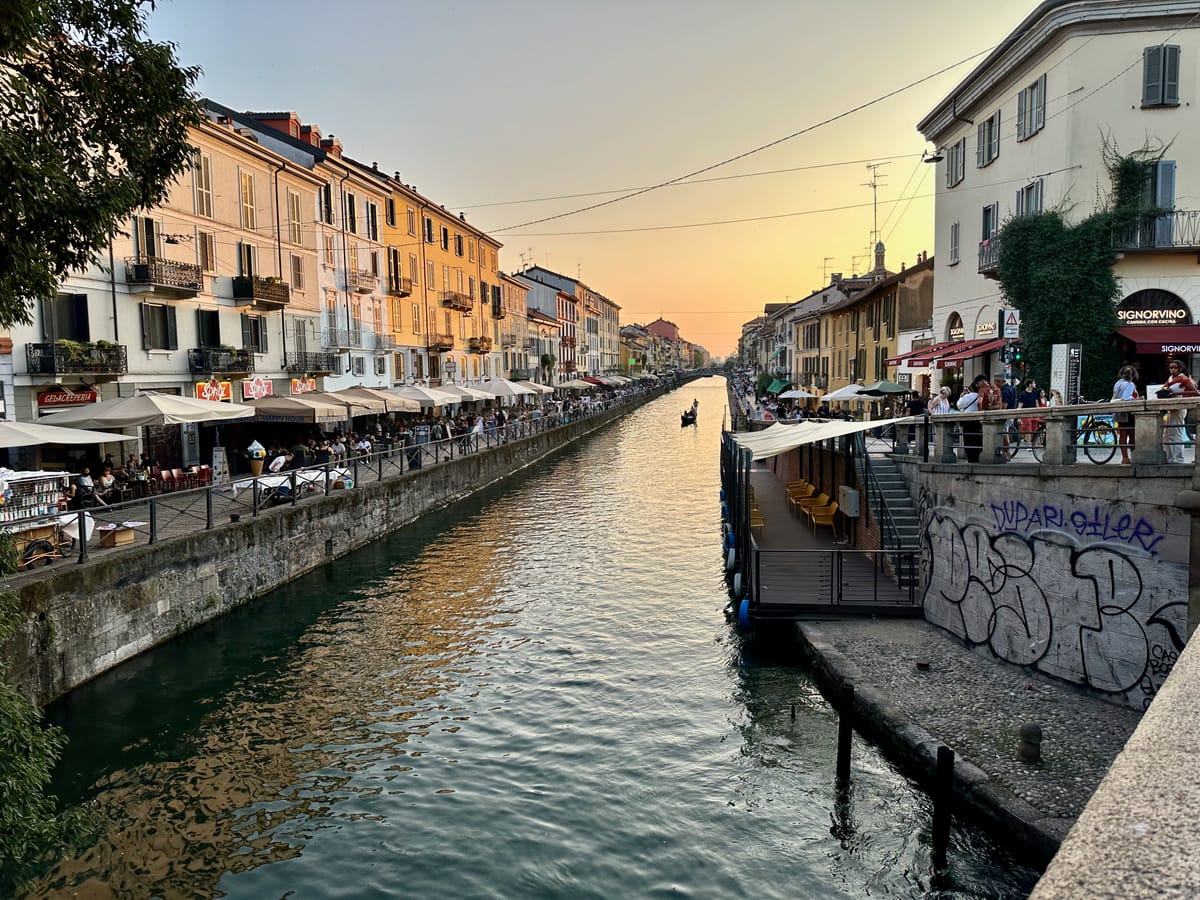
Upcoming Classes
September-October Intro to Fly Fishing and Clackamas river outing classes are full.
Thanks again for getting the word out. I'm grateful there's so much interest.
If you're interested in joining the waiting list, let me know, and I can update you if there are folks who have to drop.


